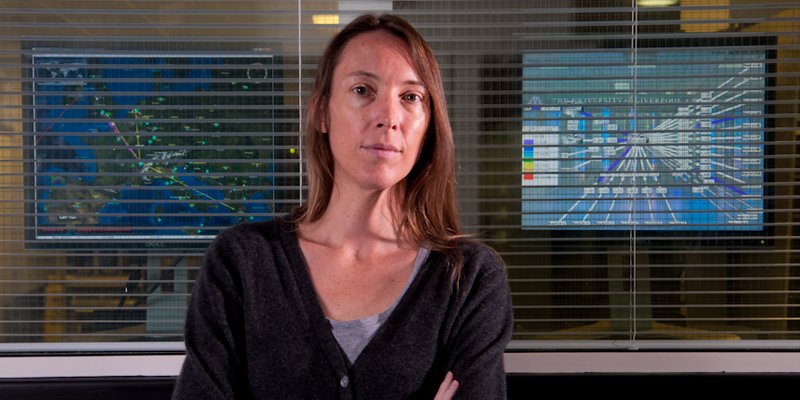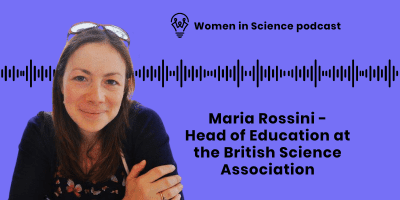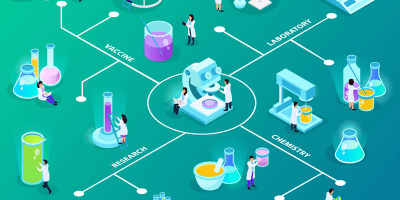Professor Tara Shears is the Vice-President for Science and Innovation at the Institute of Physics, which sits alongside her role as an experimental particle physicist at the University of Liverpool. Besides research, Tara previously chaired the principal scientific strategic advisory board for the Science and Technology Facilities Council, has acted as a core panel member for Royal Society fellowships, still acts as a panel member for UK Research and Innovation research fellowships, and enjoys engaging with different audiences about science. She is also committed to promoting scientific education and engagement, working to inspire and support the next generation of physicists.
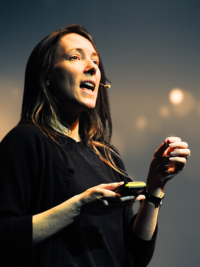
“There’s a perception, particularly at school, that physics is ‘hard’, which spreads like a vicious rumour to discourage students. You do have to work at it and think about it, but only in the same way as you would do for any other subject.”
Expanding possibilities
I’m a particle physicist, a practitioner of a science that explores the fundamental constituents of the universe using vast experiments. It’s fascinating and I’m so grateful that I’ve had the chance to be part of it.
It certainly wasn’t anything that seemed possible at school where the physics we learned seemed quite dry and unrelatable. But I’d read books about the underlying laws of nature underpinning reality, the immensity of the universe and the simplicity of considering everything in terms of a few constituents and forces and I was determined to learn more. I took a degree in physics and then a PhD in particle physics, spending time at CERN, the European Centre for Particle Physics.
Pushing knowledge forward
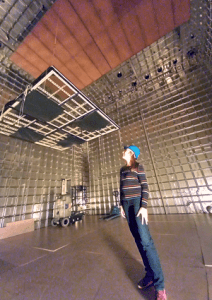
That collective endeavour has set the pattern for how I want to work to this day. I continued working there with a couple of postdoctoral fellowships, then was awarded a fellowship with the University of Liverpool to perform research in an experiment in America. I was appointed an academic in 2008, and am now a professor in charge of my local experimental group on CERN’s LHCb (Large Hadron Collider) experiment.
Anything but typical
There’s no typical day in this job. I might be teaching undergraduates, discussing progress and analysing data with my students, meeting my collaborators to discuss plans to build new particle detectors for our experiment or exciting new physics results, talking to the press or public about particle physics news, meeting Institute of Physics members in my capacity of Vice-President for Science and Innovation, working on strategy to support my subject in the best way, or just trying to understand deep concepts and how we might explore them with our data. It’s just amazingly varied and interesting and rewarding.
True ‘solutions’ work for everyone
Working in a large international collaboration teaches you why diversity of thought is important. If we all thought the same way we wouldn’t make good decisions; we need different approaches to find the best solution and recognise all the risks, and more than that, everyone in a collaboration needs to feel involved to want to contribute their best and that means being listened to.
A ‘solution’, whether it’s coming up with meeting times to accommodate attendees or developing a new way to analyse data, has to work for everyone. I’ve learnt that this fact of life applies everywhere, not just to physics.
Understanding things by breaking them down into smaller components
Having said that, it’s not easy to get diversity of thought if you don’t have a diverse group to draw upon, and we have to break down the stereotypes of physics to tackle this. There’s a perception, particularly at school, that physics is ‘hard’, which spreads like a vicious rumour to discourage students. You do have to work at it and think about it, but only in the same way as you would do for any other subject.
Perhaps one thing which can seem different (not hard) is how central the process of problem-solving is in understanding concepts in physics, where we try to understand something by breaking it into smaller components, idealise situations, and develop laws. We need to tell everyone this is a valuable life skill! We also need to show that physics has relevance even where it seems abstract and that it’s a subject that’s open to everyone. It’s too good to miss out on.
Making physics a more welcoming place for everyone
The Institute of Physics is committed to making physics a more welcoming place for everyone and has introduced initiatives to tackle the barriers people can face in participating. For example, the Limit Less campaign aims to transform how physics is perceived by school students by changing the way journalists, teachers and family members talk about it to avoid lazy stereotypes (like it being the ‘hard’ subject).
Project Juno has recognised and rewarded university and institute physics departments that help undergraduate students achieve their full potential. The Bell Burnell Graduate Scholarship fund supports students to achieve their potential at postgraduate level. The Institute is determined to improve equality of participation wherever possible, at every level.
Normal and joyful
The International Day of Girls and Women in Science gives us that vital reminder each year that, despite these great initiatives, we have a long way to go and need to do more. It also gives us the chance to celebrate the amazing work women do, and the opportunities just waiting out there for girls. I want physics to be seen as a normal and joyful activity, and the more we show normal people involved with it the faster that day will come. This day strengthens my resolve each year.
Going underground
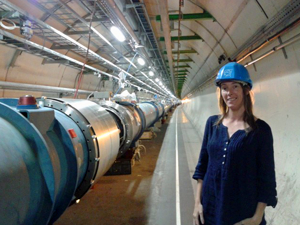
I’m going to spend my International Day of Girls and Women in Science being ridiculously excited about physics and packing for a visit to CERN. The Large Hadron Collider is not running at the moment and I’m going to be able to go underground to see three of the large experiments there. I just can’t wait. We can’t access our experiments during operations so to see them will be such a treat and a reminder of how awe-inspiring this enormous endeavour is. I will take so many photos.
Optimistic future
As to what’s next, I’m looking forward to this year of data-taking. There’s always the possibility of uncovering something new in our data and that prospect is so exciting. Beyond my research, I’m excited by the vast potential physics offers to enrich our lives and offer solutions to our problems. Physics gives us an optimistic future.
Header image credit: ©McCoy_Wynne, with special thanks to the University of Liverpool
Reference links
- https://www.iop.org/about/governance/council/tara-shears
- https://www.liverpool.ac.uk/physics/staff/tara-shears/
- https://twitter.com/TaraShears
- https://www.iop.org/
- www.iop.org/LimitLess
- https://twitter.com/PhysicsNews
- https://www.instagram.com/institute_of_physics
- https://www.facebook.com/instituteofphysics

